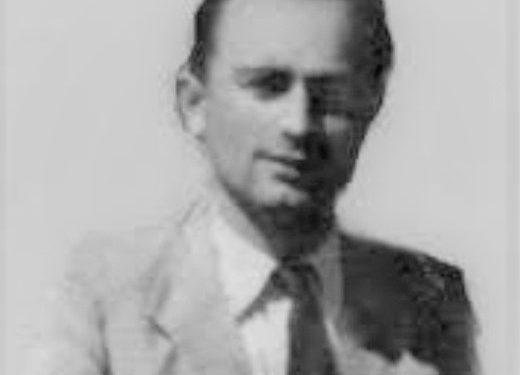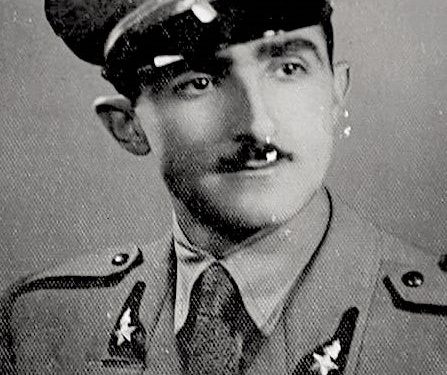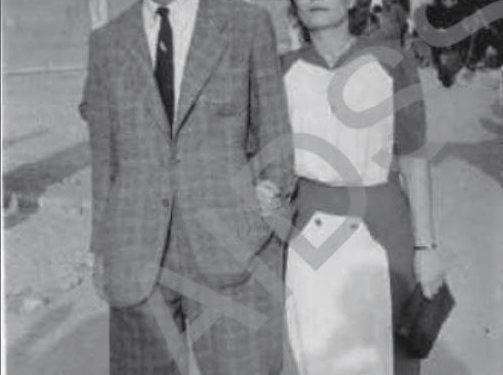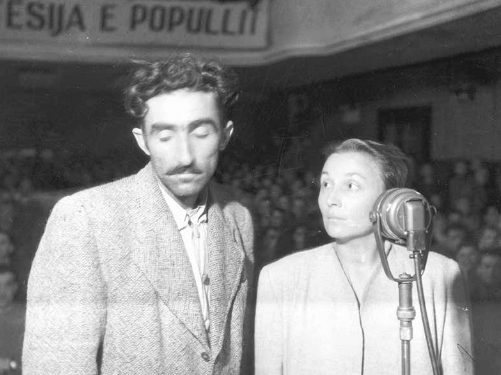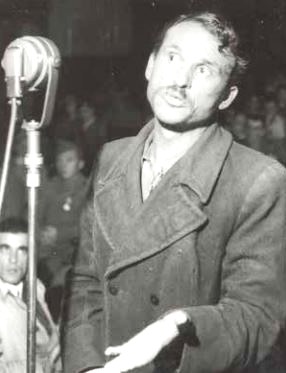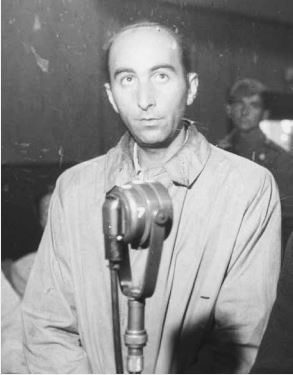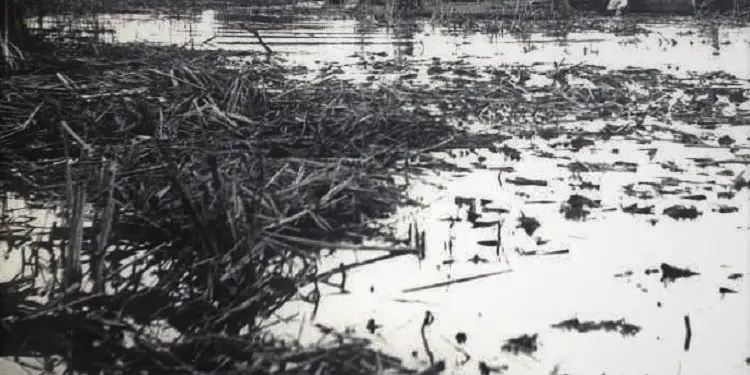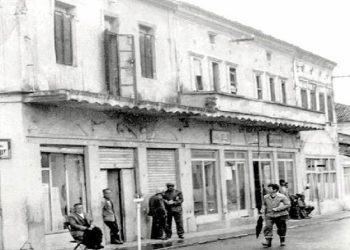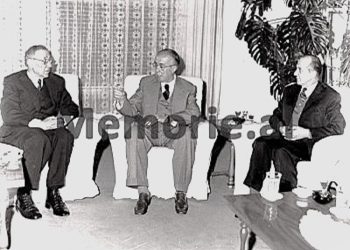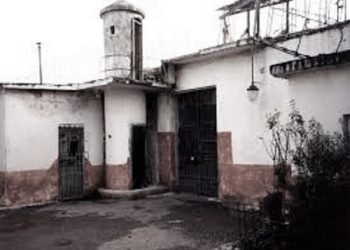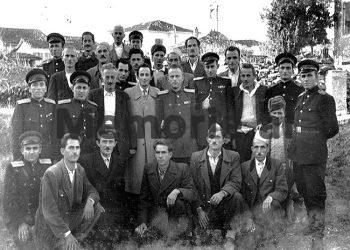From Msc. Kejsi Ziu
The first part
Memorie.al / From the beginning of its existence, the communist regime in Albania was characterized by violations of the most basic human rights, as a continuous means of work, starting from the elimination of private property, to the use of forced labor, inhumane and humiliating treatment and imprisonment, killing of opponents or other individuals, caught in the destructive whirlwind of communist aggression. A concrete example of this deeply inhumane and anti-Albanian policy is the arrest of the group of engineers charged with the task of draining the Maliq Swamp, accused by the regime of being saboteurs and collaborators of American espionage in Albania.
Some of the issues for discussion are: Was the technical group really sabotaging, that is, “an agent of the American mission in Albania”, or was this an accusation used by the regime to eliminate the influence of the USA in Albania? Did the State Security use the arrest of Maliq’s group of engineers to remove the influence of the western democratic spirit from Albania, and to turn Albania into a country without any kind of democratic transparency and accountability for governing actions? What were the accusations and the truth of the youngest engineer, Kujtim Beqiri? What was Fultz’s position and role in Albania?
Elimination of the concept of private property from the socialist regime, as a tool for class struggle!
The model of the Albanian economy in the communist period was focused on the gradual elimination of all forms of private property, through the complete nationalization of all branches of the economy and trade and the transition to fully centralized planning. The main legal instrument, from the beginning of the communist state, was the Constitution of the People’s Republic of Albania, of 1946. The main function of this Constitution was to overthrow the entire previous system of justice and create a new system.
The main inspiration for its drafting and all other legal and sub-legal acts in the years 1945-1946 was the experience of the Soviet Union. With the Constitution of 1946 it was announced: “The People’s Republic of Albania is a state of workers and working peasants” (Article 2), as well as “Work, for every able-bodied citizen, is a duty and an honor according to the principle: ‘who does not you work, you don’t eat” (Article 13). By announcing themselves as representatives of the people, that is, of workers and peasants, who had only work as their only means of living, a dividing gap was created, with all classes owning some kind of property, and a field of action was opened for the class war: owners- not owners.
After justifying this situation of class war with the constitution, in the years 1945-1946, the nationalization of private properties by the state was carried out at a very fast pace and the propaganda of the time considered it as one of the biggest successes of the communist regime. In the Constitution of 1946, article 35, it was emphasized that; every Albanian citizen was obliged to preserve and strengthen the social wealth (state and cooperative), which was considered as “the sacred and inviolable basis of popular democracy, the source of the power of the Motherland, of the well-being and culture of all employees”.
According to this provision, those who affected the social property were considered as enemies of the people. The further deepening of the class struggle was also sanctioned in the Constitution of 1976, article 4, which stated that: “The People’s Socialist Republic of Albania, develops without interruption the revolution, adhering to the class struggle and aims to ensure the final victory of on the socialist road, on the capitalist road, to achieve the complete construction of socialism and communism”.
It was this class war ideology that was massively used to persecute and physically eliminate the layer of Albanian intellectuals and all those who did not agree with the Slavic-communist regime. In this layer of intellectuals, there were also some engineers and other technical personnel who worked on the drying of the Maliqi Swamp – whose academic and professional education contradicted the ideology of the communist regime.
Propaganda and the truth about the group of engineer of Kneta i Maliqi 2: The scenario for “sabotage” and public accusations!
As it results from the investigative-judicial files, the main members of the group that were accused of sabotage, which included the engineers leading the works for draining the marsh, were: Abdyl Sharra, Kujtim Beqiri, Vasil Mano, Zyrika Mano, Mirush Përmeti, Paolo Saggioti, Eugenio Scaturro, Pandeli Zografi, Aleks Vasili, Mihal Stratobërdha, etc. The document containing the indictment filed by Prosecutor Haznedari, accused them as: “a technical-sabotage organization, which has carried out acts of sabotage in a wide-ranging and systematic manner, with the aim of slowing down the economic reconstruction of Albania, as well as for committing of acts of espionage in favor of foreign agents”.
Abdyl Sharra and then, Kujtim Beqiri, were the leaders of the works at the Maliqi site, as also results from the relations of the State Security for the development of the works there, while the rest served as employees at the site, in positions such as engineers, surveyors, accountants, etc. The exception was Zyrika Mano, who was a citizen of Croatian origin, married to one of the engineers, Vasil Mano. She was charged as the person who carried out the communication between Fultz and the group of engineers. The prosecution in this indictment, in addition to Fultz, also implicated two UNRRA missionaries as collaborators in the sabotage.
The involvement of UNRRA employees, in the trial and punishment of the group of “saboteur” engineers of the Maliqi Swamp, results from the minutes of the testimonies of Vasil Manos and Kujtim Beqir, which showed that; UNRRA employees had come to Maliq 3 times, once on May 15, once on June 13 and once in July, to ask about the details and statistics of the Maliq canal works.
Analyzed from a legal point of view, the prosecutor’s claim begins by emphasizing the special importance that this trial had for Albania, in terms of the level of betrayal that the group of engineers had shown. According to the claim, through wide-scale sabotage in the economic and then political structure of the state, the final goal of the group of engineers, who were described as “international reactionaries”, was to endanger the integrity of the country and deceive the government and the people.
The claim has almost no legal argument. From beginning to end, it contains a politically influenced discourse. The prosecutor himself had no education in the field of law. His purpose expressed in the pretense, was to “unmask” the group of engineers. The vocabulary used to formulate the accusations, the presentation of possible evidence, up to the use of insults against the defendants, with the settings “ballistic and fascist waste”, “thugs”, “catillas”, “vile spies”, or the settings ; “selfish, sold-out criminal”, for Kujtim Beqirin, etc., this is a non-existent element in regular court proceedings. Due to the non-existence of a Criminal Code, the only legal basis for bringing charges against the defendants was Law no. 21, dated 15.12.1944, “On the saboteurs of the National Liberation War”.
TRIAL
The judicial system in 1945 was built on the basis of Law no. 41, dated 14.1.1945 “On the organization and operation of military courts”, article 79, which provided that; justice in the People’s Republic of Albania, would be given by the Supreme Court of the People’s Republic of Albania, by popular courts and by military courts. The High Military Court, which judged the Maliq swamp case, consisted of three members, namely a lieutenant colonel and two military captains. Initially, this court was created as an ad-hoc court, to examine and resolve cases related to high treason crimes or other political crimes.
What can be noticed from the review of the file containing the proceedings of the court sessions is that the trial for the “saboteurs of the Maliqi Swamp” lasted only 16 days; the court hearings were held in the premises of the “17 November” Cinema. All the while, it got a lot of publicity. The media of the time constantly covered footage from the trial, using aggressive language of insults to describe the group of engineers, in order to feed propaganda. The newspaper “Bashkimi”, 1946, constantly published articles against the group of engineers and details from court hearings.
The Court’s decision is very short, only 4 pages, and again there are no legal arguments to support or oppose the prosecutor’s claim and the sentence given.
On the other hand, the defense presented by the defense lawyers is very weak and short. It is noticeable that the defendants have accepted their “guilt” and show deep remorse for their actions. In the minutes of the defense drawn up by the lawyer Vasil Xhaja, the defendant Kujtim Beqiri asks for forgiveness from the court, because he was the head of the family and had 8 dependents, although still very young.
In the end, the decision that the court took for most of the defendants was that of the death penalty. Engineers Kujtim Beqiri and Abdyl Sharra were sentenced to be hanged, while Zyrika Mano, with her husband, was sentenced to be shot. As far as Zyrika’s punishment is concerned, many researchers have discussed that Zyrika was pregnant at the time of the shooting, an additional element that testifies again to the pure violations of human rights during the communist regime.
Kujtim Beqiri: The judicial process and the truth about it
Kujtim Beqiri was arrested by the State Security on October 24, 1946, and based on the minutes kept by the latter; he was interrogated three times, on November 4, 6, and 9, 1946. According to his testimony, in summary, he and “other disaffected elements” had been contacted and recruited by Fultzi, after the liberation of Albania (1943), while he was working near the World Ministry.
Fultz proposed the creation of an organization with a technical-intellectual element, at the head of which should be his former students, with the aim of waiting in readiness for the moment when the then provisional government was replaced by a pro-Anglo government – American. The work of this organization would be summed up in the indirect sabotage of the construction of the country, and as a result, it should be harmful to the government in terms of the economy and its political line. In addition to the help from the American mission, the technicians and intellectuals in general had to sabotage the pace of the reconstruction work and therefore affect the loss of “the credibility of the government towards the people”.
In exchange for the sabotage, Fultz would give Beqir a financial reward of 200 or so gold pounds, which he would distribute to the rest of the group. These sabotages would be expressed through the non-completion of the works on time and carrying out propaganda in favor of American democracy, among the workers who worked in Maliq. At the time when Kujtim Beqiri was managing the Maliqi construction site, it is alleged that various strikes were provoked by the workers and about 100 workers deserted, and this was due to the political work he did, along with other collaborators.
His nickname established by Fultzi, according to the testimony, was “Kab.” This is another element, which shows that the State Security wanted to expose the engineers as a criminal organization, organized in a sophisticated way, to the point that they even had nicknames for each other. Again based on the testimony given by Kujtim Beqir, it is shown that Fultzi had instructed him to sabotage other works, the construction of which he was in charge of, before he was assigned to work in Maliq, instead of Abdyl Sharra. Examples mentioned there is the construction of the Bicaj road, or the Rrogozhina Bridge over Shkumbin, which was originally built by the Italians, at the time of Ahmet Zogu, was blown up during the war by the Germans and was rebuilt immediately after the liberation, in 1945.
These works, which the communists claimed were sabotaged, in reality, not only survived the entire period of the dictatorship, fully performing their function, but some of them still exist today, which proves that they were built according to the right parameters technique. They are proof of the seriousness and professional dedication of the engineer Kujtim Beqiri, who led the work on their construction.
After his transfer to Maliq, it is alleged that Kujtim Beqiri, together with the other engineers accused above, with whom he regularly met secretly to discuss the continuation of the sabotage, drew up periodic reports for Fultz on the continuation of the sabotage, which he sent through the Office or through the verbal communications he made with himself. According to the minutes of Kujtim Beqir’s testimony, a total of four meetings were organized, where in two of them the reports that would be sent to Fultz via Zyrika Manos were discussed. According to the accusation, after reading these correspondences to other members of the group, he tore them up. Memorie.al
The next issue follows




